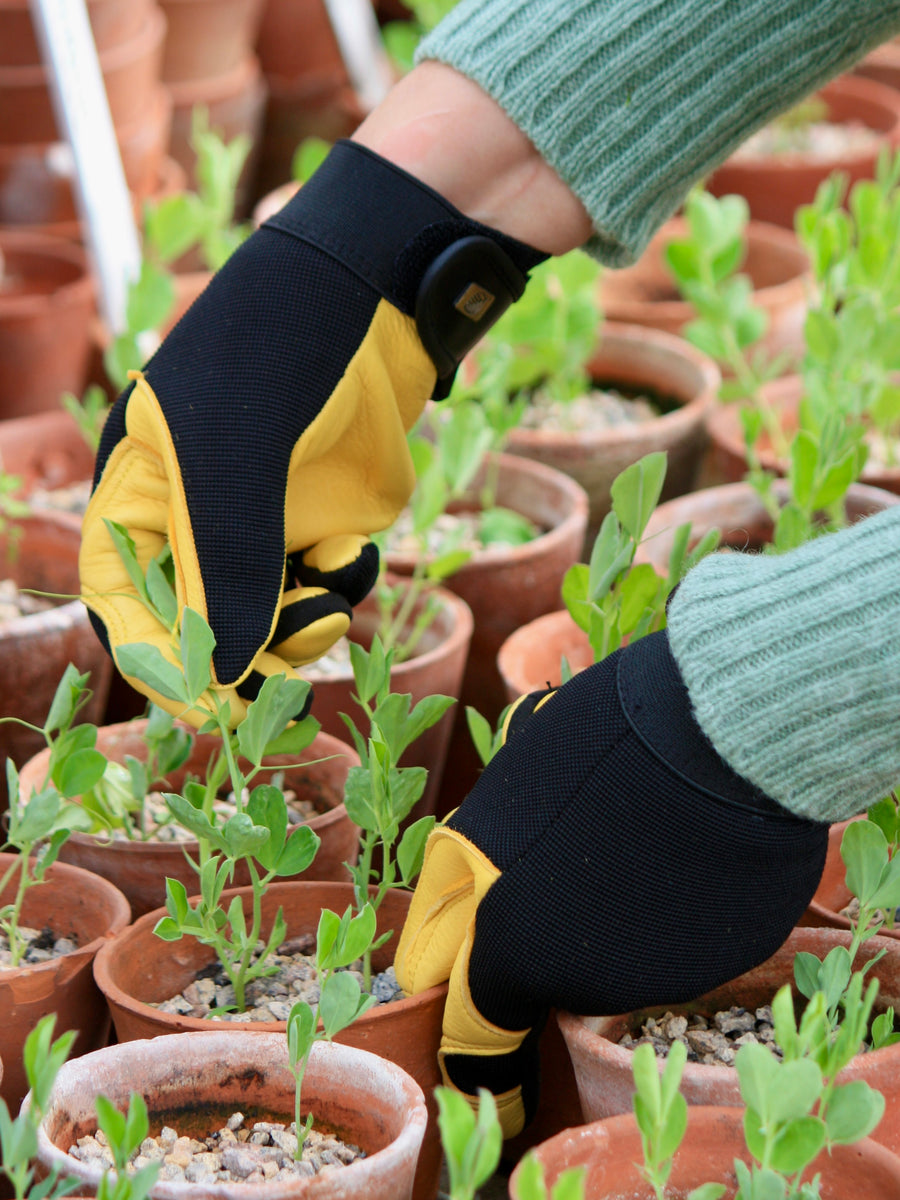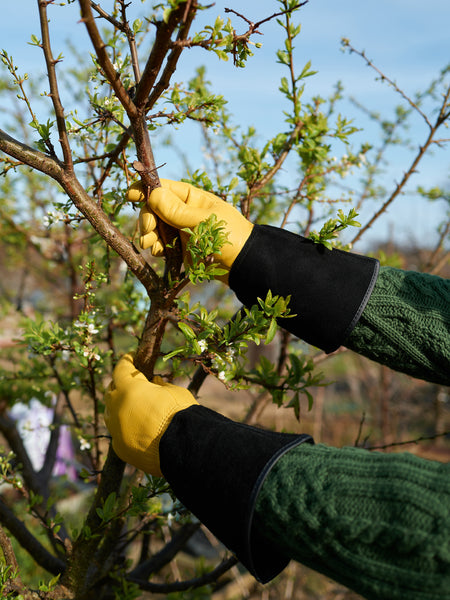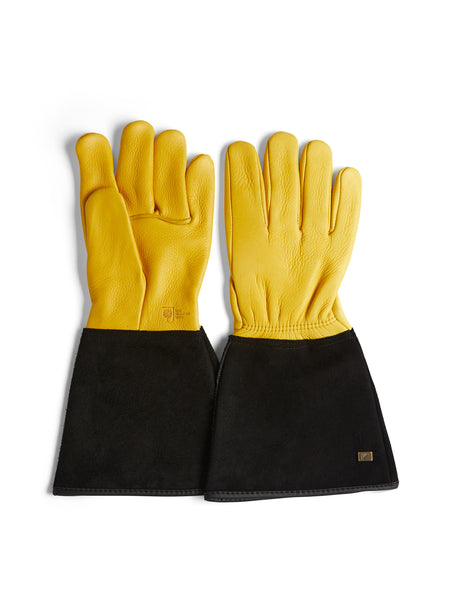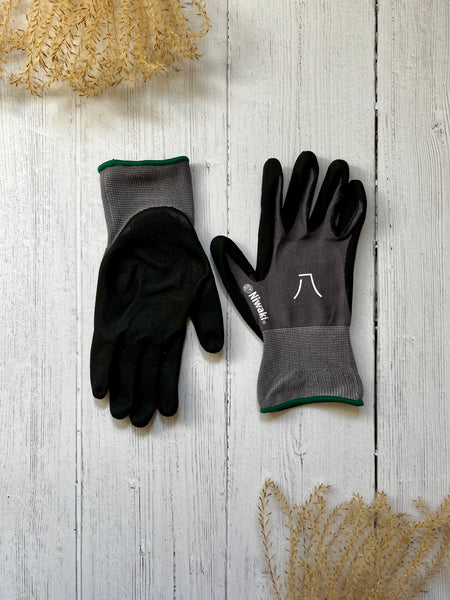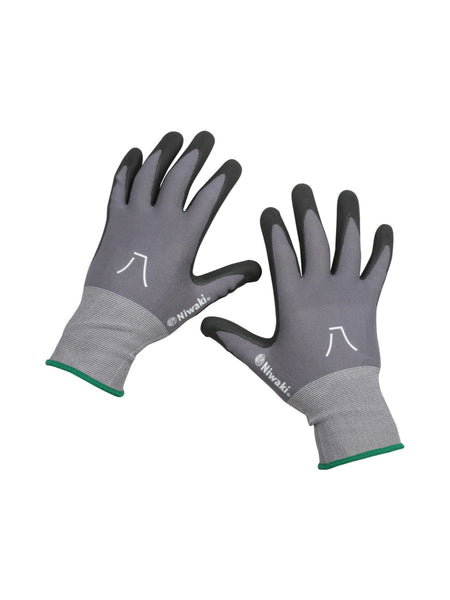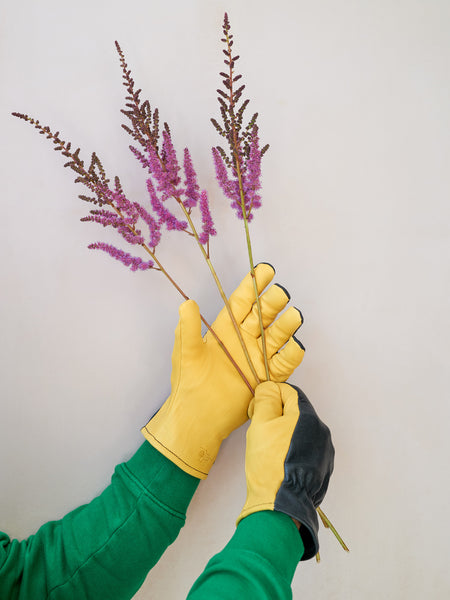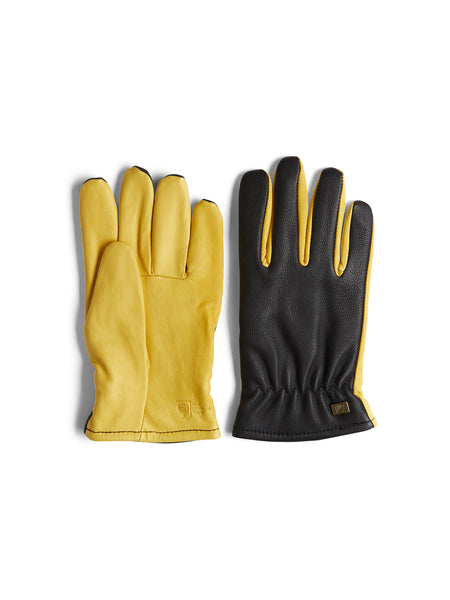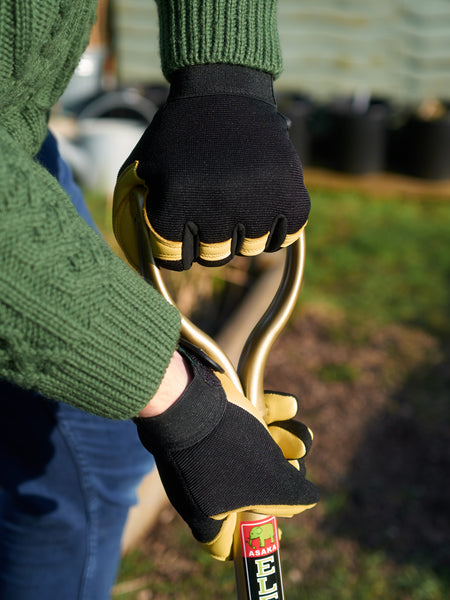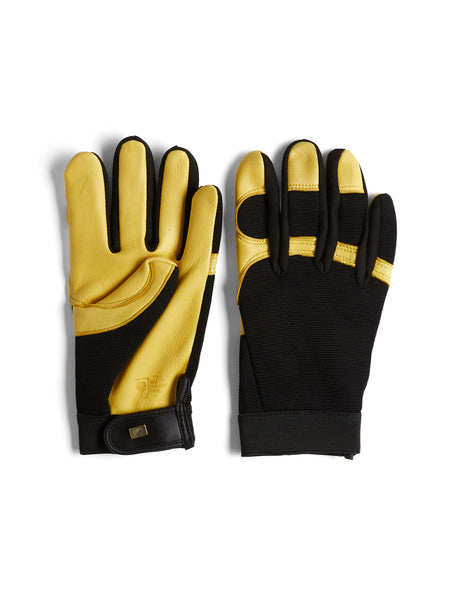Many gardeners say they prefer not to wear gloves because they want to feel the soil beneath their fingertips and enjoy that special connection with the earth. I am one of them. But investing in a great pair of gardening gloves will make working in your garden safer and more enjoyable. For starters, gloves can protect your hands from blisters, cuts, scratches, pathogens, allergens, insect bites, UV rays and chemicals, meaning you can work more comfortably, healthily and for longer than you might with bare hands. They can also keep your hands clean, dry and presentable so that you can easily switch between work and play.
If you’ve developed an aversion to gardening gloves, it’s probably because you’ve had a bad experience. Perhaps you’ve purchased a pair that have been so cumbersome that you can’t get a grip on what you’re doing, or maybe they didn’t last as you expected. Poor-quality, ill-fitting gloves can be horribly stiff and uncomfortable and may wear out quickly. A good pair will be quite the opposite - supple, snug and easy to pull on and off. In this post, I’ll guide you through the questions you need to ask and explain your options and there's more on my YouTube channel too:
Which gloves do I buy?
Your main consideration is what work you will do and how often. If you’re mainly going to be deadheading, potting and weeding when the weather is fine and dry, cotton or nitrile gloves are just the ticket, but if you’re tackling a thicket of brambles and nettles, gauntlet gloves will offer the protection you need. Keen horticulturalists may be happy to own several pairs of gloves, each suited to a different task, whereas occasional gardeners can make do with one good all-rounder.
Choosing the right size can be tricky, especially if you are buying online. Knowing your glove size can help, but most people don’t, and many gloves are simply labelled large and small. If possible, try before you buy. Whenever Dan Cooper Garden is on the road, I take samples and encourage people to put them on before making a decision. Gardening gloves should be snug but not tight and you ought to be able to make a fist in them without any resistance. If the person you’re buying for isn’t present, ask a member of staff with similar-sized hands to model them for you. Fingers should reach the end of the tips but not feel wedged against them (this will cause friction, especially if you have long nails). You should also be able to get them on and off easily, yet have cuffs that fit closely enough to prevent debris dropping inside. Tight gloves will be uncomfortable and restrictive, and they’ll wear more quickly. Chances are that you’ll give up on them long before holes appear. That said, it’s worth being aware that leather gloves will give slightly after a few wears, so allow for that when making a decision.

Finally, there’s the all-important question of price. As with most things in life, you get what you pay for, so there’s a balance to be struck. If you’re a novice and unsure how often you’ll be gardening, start with an inexpensive pair of nitrile gloves and then upgrade to leather when feeling more confident: gloves make great gifts and there’s sure to be someone who will treat you on a special occasion.
It’s important to be realistic about the longevity of gardening gloves - if you’re going to be wearing them daily and gardening in all weathers, you may get through one or more pairs in a year. If you’re prone to leaving gloves outside or your dog takes great delight in chewing them, it’s probably best not to invest in the finest leather.
The sustainability credentials of gardening gloves are not the strongest. As far as I am aware, all are imported, even if the brand is British. Many of the materials used require the use of chemicals, and they’re combined in such a way that they’re hard to recycle. While the industry seeks a solution (there are gloves made from bamboo fibre and recycled bottles appearing on the market) the best advice I can give is to use your gloves for as long as possible before disposing of them appropriately.

Niwaki nitrile gardening gloves - extra large is my size.
Types of gardening glove
Cotton gloves - lightweight and breathable, cotton gloves are brilliant for light duties and perfect for gardening when the weather is warm and dry. They’re usually inexpensive and often adorned with attractive prints. If they’re 100% cotton, they’re biodegradable, but if they’re coated with rubber or have an elasticated cuff, that part won’t decompose. Cotton gloves are not waterproof and nor are they puncture-resistant, although canvas provides better protection from thorns. You can generally wash them according to the manufacturer’s instructions.
Synthetic / nitrile gloves are a mixture of knitted material, which could be made from recycled materials, and coated with a synthetic rubber known as nitrile. Unlike natural latex, most people are not allergic to nitrile which lends the gloves grip and water resistance. They’re comfortable to wear on all but the hottest and coldest days, and they take up very little space in a trug or apron pocket. Like cotton gloves, they’re ideal for jobs requiring maximum dexterity, such as potting, deadheading, weeding, harvesting fruit and vegetables and collecting logs from the wood shed. You can wash them, but don’t expect them to last forever or offer protection from thorns and sharp blades.
Leather gloves - this is a big category. Many types and grades of leather are derived from goats, cows and deer. There are also gloves made from leather-like materials not originating from animals. I could go into detail about the pros and cons, but ultimately your choice depends on what you feel comfortable with physically and ethically. The difference between an inexpensive goat skin glove and a premium-grade deerskin glove is clear the moment you touch it and will be reflected in the price you pay. Poor-quality leather can be cold, tough, rough and smelly, whereas top-grain deerskin feels butter soft, warm and pliable.
There are numerous designs of leather gloves, from tough, gauntlet-styles to soft, suede slip-ons. Although leather isn’t waterproof, some gloves incorporate a water-resistant layer, and others boast thermal linings. Gold Leaf Gloves are the Rolls Royce of gardening gloves, endorsed by the Royal Horticultural Society, so I recommend them to anyone looking for leather gloves.
Leather is naturally tough and long-lasting, although not indestructible. It may wear at the fingertips and sometimes on the knuckles, as that’s where most abrasion and stretching occurs. If leather gloves get wet, they must be allowed to dry naturally and not on a radiator, otherwise they’ll become stiff and uncomfortable. When leather gloves get dirty, it’s best to brush away any debris with a soft brush and leave it at that, but, if you must, wash them in warm soapy water, then rinse thoroughly and air dry.
Rubber gloves - full rubber gloves are not suitable for gardening in general, but they have their uses as they’re the only option that's completely waterproof. Rubber gloves are just the job if you’re cleaning drains, clearing ponds, handling chemicals, fertilisers or toxic plants and they can be rinsed after use. Prolonged wear will make your hands hot and sweaty, which can, in turn, result in an itchy rash. Rubber gloves can be punctured by sharp objects, which renders them fairly useless.

I want one pair of gardening gloves. Which should I choose?
If you’re planning on gardening often and in all weather, I’d recommend Gold Leaf Dry Touch gloves. Comfortable and water resistant, they come in two sizes, men's and women's. Although it’s a somewhat outdated distinction, in 90% of cases, they do fit accordingly. Women with large hands may prefer the men’s size, but men with particularly large hands probably won’t find these a good fit.
If you’re mainly tending houseplants, a patio or a balcony during the spring, summer and autumn, then Niwaki nitrile gardening gloves are brilliant and inexpensive. They come in four sizes; small, medium, large and extra large, relating to glove sizes 7,8,9 and 10. I have yet to serve a customer who hasn’t found a size that fits.
Finally, if you’re planning serious garden clearance, lopping trees, pruning roses, grasping nettles, or starting to garden professionally, invest in a pair of Gold Leaf Tough Touch gloves to protect your hands, wrists and forearms from cuts and scratches.
If you can afford it, one pair of each leather glove and a couple of nitrile gloves will cover all eventualities.
What's my size?
There are lots of different ways to work out your glove size. The simplest is to measure your hand, as shown below, using a ruler or tape measure.
In Niwaki gloves, 7cm equates to small, 8cm to medium, 9cm to large and 10cm to extra large.
In Gold Leaf gloves, 7-8cm would fit the women's (small) size and 9-10cm would fit the men's (large) size.

Happy Gardening!
